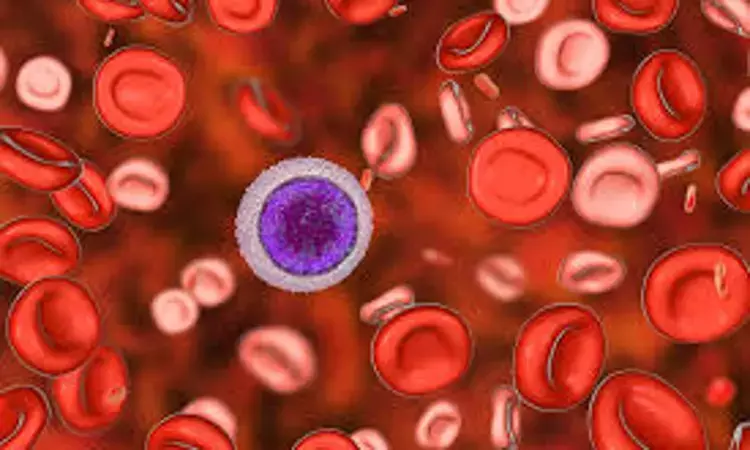- Home
- Medical news & Guidelines
- Anesthesiology
- Cardiology and CTVS
- Critical Care
- Dentistry
- Dermatology
- Diabetes and Endocrinology
- ENT
- Gastroenterology
- Medicine
- Nephrology
- Neurology
- Obstretics-Gynaecology
- Oncology
- Ophthalmology
- Orthopaedics
- Pediatrics-Neonatology
- Psychiatry
- Pulmonology
- Radiology
- Surgery
- Urology
- Laboratory Medicine
- Diet
- Nursing
- Paramedical
- Physiotherapy
- Health news
- Fact Check
- Bone Health Fact Check
- Brain Health Fact Check
- Cancer Related Fact Check
- Child Care Fact Check
- Dental and oral health fact check
- Diabetes and metabolic health fact check
- Diet and Nutrition Fact Check
- Eye and ENT Care Fact Check
- Fitness fact check
- Gut health fact check
- Heart health fact check
- Kidney health fact check
- Medical education fact check
- Men's health fact check
- Respiratory fact check
- Skin and hair care fact check
- Vaccine and Immunization fact check
- Women's health fact check
- AYUSH
- State News
- Andaman and Nicobar Islands
- Andhra Pradesh
- Arunachal Pradesh
- Assam
- Bihar
- Chandigarh
- Chattisgarh
- Dadra and Nagar Haveli
- Daman and Diu
- Delhi
- Goa
- Gujarat
- Haryana
- Himachal Pradesh
- Jammu & Kashmir
- Jharkhand
- Karnataka
- Kerala
- Ladakh
- Lakshadweep
- Madhya Pradesh
- Maharashtra
- Manipur
- Meghalaya
- Mizoram
- Nagaland
- Odisha
- Puducherry
- Punjab
- Rajasthan
- Sikkim
- Tamil Nadu
- Telangana
- Tripura
- Uttar Pradesh
- Uttrakhand
- West Bengal
- Medical Education
- Industry
Obesity and body shape among diabetics tied to increased erythropoiesis and reticulocyte immaturity

Obesity and body shape among diabetes patients associated with increased erythropoiesis and reticulocyte immaturity suggests a new study published in the BMC Endocrinology Disorders.
Obesity is associated with type 2 diabetes mellitus and chronic low-grade inflammation. Although chronic inflammatory conditions and diabetes are associated with anaemia, less is known about associations of obesity and body shape, independent of each other, with erythrocyte and reticulocyte parameters.
Researchers investigated the associations of body mass index (BMI) and the allometric body shape index (ABSI) and hip index (HI), which are uncorrelated with BMI, with erythrocyte and reticulocyte parameters (all continuous, on a standard deviation (SD) scale) in UK Biobank participants without known metabolic, endocrine, or major inflammatory conditions (glycated haemoglobin HbA1c < 48 mmol/mol, C-reactive protein CRP < 10 mg/L). We examined erythrocyte count, total reticulocyte count and percent, immature reticulocyte count and fraction (IRF), haemoglobin, haematocrit, mean corpuscular haemoglobin mass (MCH) and concentration (MCHC), mean corpuscular and reticulocyte volumes (MCV, MRV), and red cell distribution width (RDW) in multivariable linear regression models. We additionally defined body shape phenotypes with dichotomised ABSI (≥ 73 women; ≥ 80 men) and HI (≥ 64 women; ≥ 49 men), including “pear” (small-ABSI-large-HI) and “apple” (large-ABSI-small-HI), and examined these in groups according to BMI (18.5–25 normal weight; 25–30 overweight; 30–45 kg/m2 obese).
Results
In 105,853 women and 100,854 men, BMI and ABSI were associated positively with haemoglobin, haematocrit, and erythrocyte count, and more strongly with total reticulocyte count and percent, immature reticulocyte count and IRF. HI was associated inversely with all, but least with IRF. Associations were comparable in women and men. In groups according to obesity and body shape, erythrocyte count was ~ 0.6 SD higher for obese-“apple” compared to normal-weight-“pear” phenotype (SD = 0.31*1012/L women, SD = 0.34*1012/L men), total reticulocyte count was ~ 1.1 SD higher (SD = 21.1*109/L women, SD = 23.6*109/L men), immature reticulocyte count was ~ 1.2 SD higher (SD = 7.9*109/L women, SD = 8.8*109/L men), total reticulocyte percent was ~ 1.0 SD higher (SD = 0.48% women and men), and IFR was over 0.7 SD higher (SD = 5.7% women and men). BMI but not ABSI or HI was associated more weakly inversely with MCV, MRV, and MCH, but positively with MCHC in men and RDW in women.
In obesity uncomplicated with diabetes, larger BMI and ABSI are associated with increased erythropoiesis and reticulocyte immaturity.
Reference:
Christakoudi, S., Tsilidis, K.K., Evangelou, E. et al. Associations of obesity and body shape with erythrocyte and reticulocyte parameters in the UK Biobank cohort. BMC Endocr Disord 23, 161 (2023). https://doi.org/10.1186/s12902-023-01423-1
Keywords:
Obesity, body, shape, among, diabetes, patients, associated, increased, erythropoiesis, reticulocyte, immaturity, Christakoudi, S., Tsilidis, K.K., Evangelou, E, Waist size, Hip size, ABSI, Erythrocytes, Reticulocytes, Haemoglobin
Dr. Shravani Dali has completed her BDS from Pravara institute of medical sciences, loni. Following which she extensively worked in the healthcare sector for 2+ years. She has been actively involved in writing blogs in field of health and wellness. Currently she is pursuing her Masters of public health-health administration from Tata institute of social sciences. She can be contacted at editorial@medicaldialogues.in.
Dr Kamal Kant Kohli-MBBS, DTCD- a chest specialist with more than 30 years of practice and a flair for writing clinical articles, Dr Kamal Kant Kohli joined Medical Dialogues as a Chief Editor of Medical News. Besides writing articles, as an editor, he proofreads and verifies all the medical content published on Medical Dialogues including those coming from journals, studies,medical conferences,guidelines etc. Email: drkohli@medicaldialogues.in. Contact no. 011-43720751


